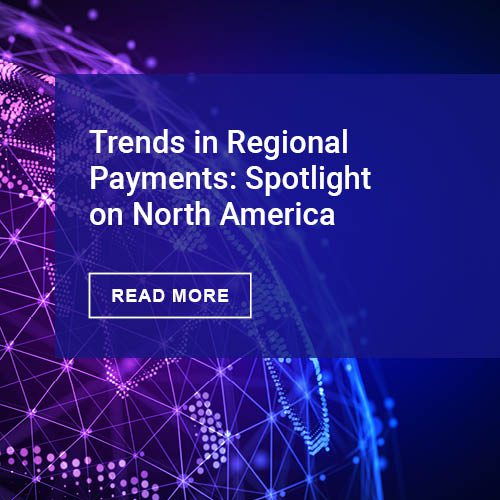In 1978, a blizzard hit New York City and closed the banks for four days. New Yorkers who needed cash to buy gas and groceries on that long, snowy weekend turned to technology they had previously ignored: automated teller machines. For more than a decade, customers who preferred to do their banking with real people avoided ATMs. But that snowstorm was a tipping point – the moment their discomfort with technology was overcome by the need for a practical solution.
Citibank, which had invested $160 million in ATM technology, saw its use of the machines increase by 20% during the storm. By 1981, the company’s share of New York deposits had doubled, thanks to the convenience of ATMs. Prompted by a snowstorm and reminded of that experience by an expansive marketing campaign promoting bank automation, customers changed the way they interacted with their banks forever.
Today digital technology is common, and many banking customers are accustomed to using it to deposit checks, invest money, and pay bills. But not everyone.
If you’re not a digital native like Millennials or GenZ – if you’re Generation X and older – you may still prefer to do your banking in person, where you feel more secure and in control of each transaction. Also, depending on your socio-economic demographic and other unique factors, you may lack trust in digital banking. Many users that fit this description fear the impact of making costly mistakes while using unfamiliar, counterintuitive technology.
Even for consumers who harbor these reservations, however, the pandemic has created a new tipping point. When banks closed their physical doors in early 2020, many people were forced to embrace digital banking channels. With stay-at-home orders keeping people from their branches, mobile deposits and electronic bill payments became the most logical way to handle their financial transactions.
Even though it was Gen X and Boomers who actually launched the technology that banks are trying to get people to use, some people in those very generations still have not embraced digital banking as much as industry leaders had hoped. Ironic, I know. I believe the responsibility for this gap lies with the banks.
Step up and serve all consumers
Older generations are not averse to technology. A recent Pew Research study found that roughly 70% of respondents over the age of 50 own a smartphone. My social media feed is rife with examples of super-agers who use Facebook to stay in touch with family and friends, e-commerce to order merchandise, and telehealth apps to check in with their doctors. So why have they been slow to take full advantage of digital banking?
Too many financial services institutions are delivering experiences that fail to match user expectations and needs. Often consumer banking apps are confusing and difficult to use. When a mistake occurs, getting help from a real person seems almost impossible for these inexperienced users. And the potential fees can be devastating to those on a tight budget.
But as COVID-19 has expanded the use of digital banking channels, it can also help banks take responsibility for creating a better customer experience. Banks must identify the needs and priorities of all consumers – using data-driven intelligence to provide the resources necessary to create a unique, rewarding, and entrusting customer experience. By tailoring digital banking experiences to meet the needs of a multi-generational, diverse user community, banks can create a banking ecosystem that supports consumers and helps bridge the generational and technical divide.
Take control of the user experience
Banks also must take steps to make users feel more confident with their apps, so they will trust that tasks are executed properly. Simplified, easy-to-navigate apps with step-by-step progress indicators during transactions offer digital “hand-holding” to less confident users. Simply offering to send a confirmation e-mail or text after a consumer sets up a recurring electronic bill payment would go a long way to calming the nerves of hesitant users. Implementing biometric technologies such as retinal or face scans or fingerprint identification can offer users a nearly foolproof way to secure their accounts and transactions and get rid of annoying, easy-to-forget passwords.
Another way to attract these users is to develop inclusive solutions that give people confidence in using digital solutions. For example, incorporating one-touch, easily understood technologies such as customer service videochat can make it easier for less tech-savvy users to get help when they need it, and it provides the comfort of a personalized, human interaction from home.
Banks also can learn how consumers really feel about digital channels by deploying experience management solutions. By collecting experience data at every meaningful touchpoint, these solutions help banks understand how customers perceive their business and find ways to deliver better, more personalized experiences.
Embrace inclusivity
When creating banking apps, developers need to consider the needs of all consumers, not just those who are digital natives. Bank leadership must ensure that access to digital banking is universal, so that all consumers find the apps to be accessible and usable. This is just good business – after all, older generations tend to have more wealth and helping them succeed with digital channels will develop more satisfied, loyal customers. But it’s also better for society to ensure digital banking includes users at all stages of life and all levels of prosperity.
No one knows how long this pandemic will last or what long-term impact will be on digital banking. Now is the time for banks to take steps to make it easier, more intuitive, and trustworthy for every generation and type of user to do business digitally with your bank.












